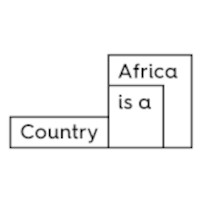What can historians of Eastern Europe learn from Ghanaian responses to the Russian invasion?
Third Russia Street and the “Russian bungalows” in Tamale, Ghana. Photo by Łukasz Stanek © 2022.
Reflecting on the Russian invasion of Ukraine, architectural historians Andres Kurg and Carmen Popescu have recently asked if scholars once again “need Eastern Europe.” Giving reasons for why that might be the case, they position the region among places where “colonialism seems to strike back” and noticed a renewed interest in a postcolonial rereading of the architectural history of and in Eastern Europe.
Such rereading promises to recognize a broader historical relevance of a region that, since the end of the Cold War, has been rarely considered to have one. But how convincing is a postcolonial positioning of Eastern Europe when considered from beyond the region? Does it hold up when confronted with the views on the war in Ukraine from various parts of the African continent, a landmass profoundly shaped by colonial violence?
I experienced the first months of the Russian invasion of Ukraine while staying in Ghana, where I was a visiting scholar during the spring semester of 2022. I had many conversations with Ghanaians about the war: with parents anxious about their children who had studied in Ukraine and struggled to get out, with friends concerned about the rising prices of fuel and food, and with colleagues worried about the longer consequences of the war for West Africa.
Many—but certainly not all—of my Ghanaian interlocutors were reluctant to express support for Ukraine. That was a common sentiment circulating in West African media, which often opined that Russia was provoked by NATO’s enlargement in Eastern Europe in the aftermath of the Cold War.
This point of view baffled Eastern European commentators, who expected Africans from across the continent to be natural allies. That expectation was based on assumed historical similarities between Western European colonial occupation of the African continent and the occupation of Eastern Europe by neighboring empires. Many pointed at the continuities between tsarist colonialism in Eurasia and Soviet conquests, including that of Ukraine. Others reminded their readers that both Eastern Europeans and Africans were subjected to the Western European distinction between a “good” type of nationalism of “respectable” nations such as Britain and France, and a “bad” type of nationalism of “small peoples who have small minds,” to quote Wisława Szymborska.
These debates were hardly registered by the media in West Africa. Yet the responses of commentators on the continent to Western European and North American journalists may be read as rebuttals of the historical analogies proposed by some Eastern European media.
For example, Kenyan writer Patrick Gathara questioned “why Africa does not appear to be ‘standing with Ukraine’.” He argued that while most Africans would agree to support Ukraine from a humanitarian point of view, they would refuse to accept the political consequences of this statement as proposed by Western media and institutions. As Gathara points out, this refusal reflects experiences across Africa of encounters with Europe and the US. They include both the long history of Western European colonialism and the more recent military interventions by Americans and Europeans, among them the new member-states of NATO.
The difference between Europe’s response to these interventions and to the Russian invasion of Ukraine shaped the perception of the invasion among West Africans. Writing on social media, many pointed out the contrast between the welcome received by Ukrainian refugees in Poland, and the pushbacks of North Africans, Central Asians and Middle Easterners at the Polish-Belarussian border since the winter of 2021.
Several of my Ghanaian acquaintances have concluded that the reception of refugees at the Polish border depended on their race. They saw this view confirmed by several incidents during the first weeks of the Russian invasion when groups of African students were hindered from boarding trains and crossing borders to Poland and other EU countries. By contrast, many Eastern Europeans would argue that their solidarity with Ukrainians was not about race but about a shared history and a common threat posed by a rogue neighbor.
In other words: when Eastern Europeans see the war in Ukraine through the legacy of colonialism, many of my Ghanaian interlocutors would agree. But that would only highlight the differences in the understanding of this term across these two geographies. When Eastern Europeans see the war in Ukraine in continuity with the history of Russian colonialism, they understand it along the lines of military domination, economic extraction, ethnic displacement, and cultural subjugation. But many Ghanaians questioned the role of the color line in this dynamic or, in the words of W.E.B. Du Bois: “the relation of the darker to the lighter races of men in Asia and Africa, in America and the islands of the sea.”
Historians, among them Kathryn Ciancia, Sofia Dyak, and Itohan Osayimwese, have been studying for a long time the ways in which racial and ethnic categories were central to Prussian, German, Austrian, Austro-Hungarian, Russian, and Ottoman imperialisms, and to Poland’s “internal colonization” between the two world wars. What the view from West Africa adds to these complex histories of racialization and their ongoing consequences is a reminder that while Eastern Europeans oscillated across the color line, their amplitudes were not symmetrical. While their claim to whiteness has been often qualified in Western Europe, it has rarely been categorically denied. In particular, in the aftermath of the Cold War, citizens of several Eastern European countries have increasingly become beneficiaries of whiteness as these countries have been absorbed into Western political, economic, and military structures, however unequally and unevenly.
What does this disputed positionality of the European East mean for the question posed by Kurg and Popescu? In my work, I have argued that the Eastern Europe that architectural historians may “need” is an epistemic place. This argument built on the work of scholars such as Ákos Moravánszky and Manuela Boatcă who understood Hungary and Romania as locations “off center” from which established knowledge production may be questioned and modified. In my study of Cold War architectural exchanges, I showed how architects and planners from Eastern Europe and West Africa speculated about sharing such a common positionality “off center” in order to adapt and appropriate architectural concepts and planning methods across these geographies.
Just as that speculation was embedded in the rereading of Eastern European and West African histories in the context of the Cold War and administrative decolonization, so is the war in Ukraine a new moment of historical repositioning. While in 2022 most of Eastern Europe and large parts of the African continent continue to be “off center” of global academic production, the perspective from the continent on the war in Ukraine revealed the differences between their positionalities. Consequently, when read from across Eastern Europe and West Africa, fundamental concepts of historical enquiry such as “modernity,” “development,” “the global,” “colonialism,” or “race” not only divert from their hegemonic readings, but also differ across these “off center” locations.
Such differences make a conversation between these locations even more urgent: not so much because this conversation would contest hegemonic concepts and methods, but because it would offer a possibility of actively forgetting them.
This text is a contribution to the debate Why We Need Eastern Europe (again), edited by Andres Kurg and Carmen Popescu, which will appear in the journal Architectural Histories.






